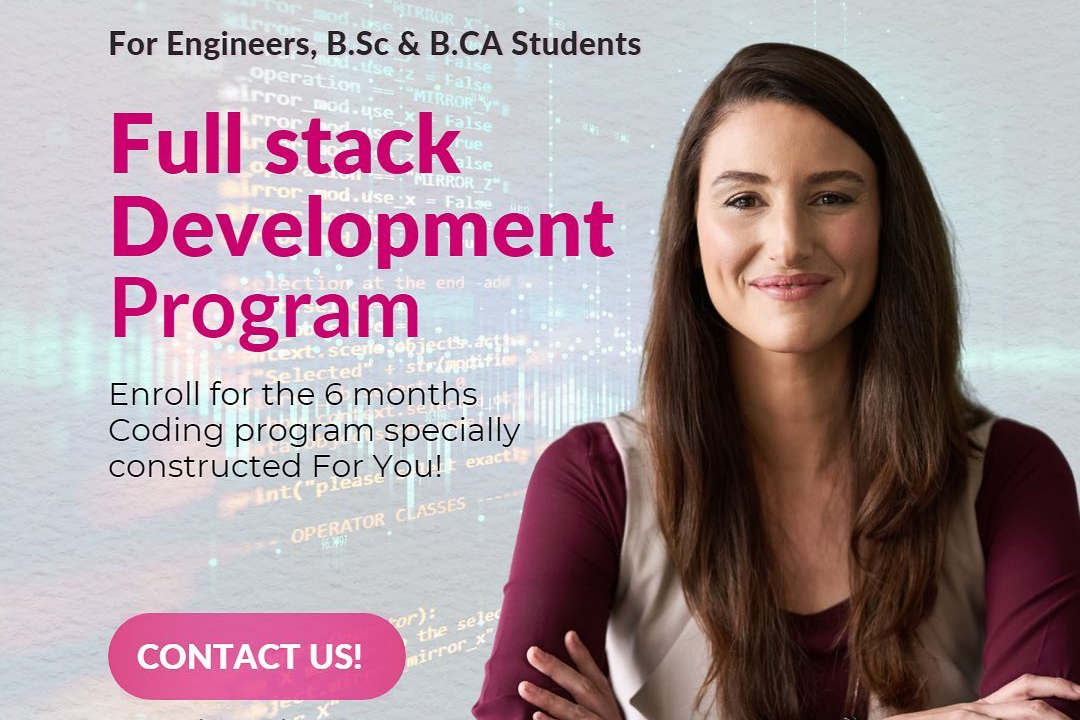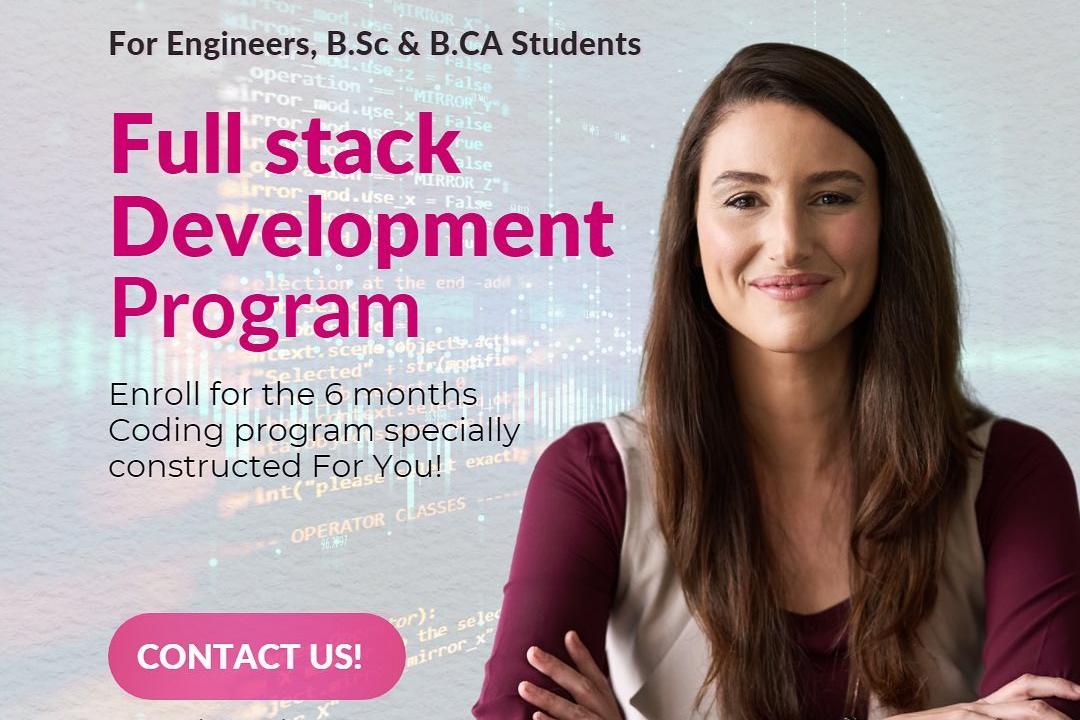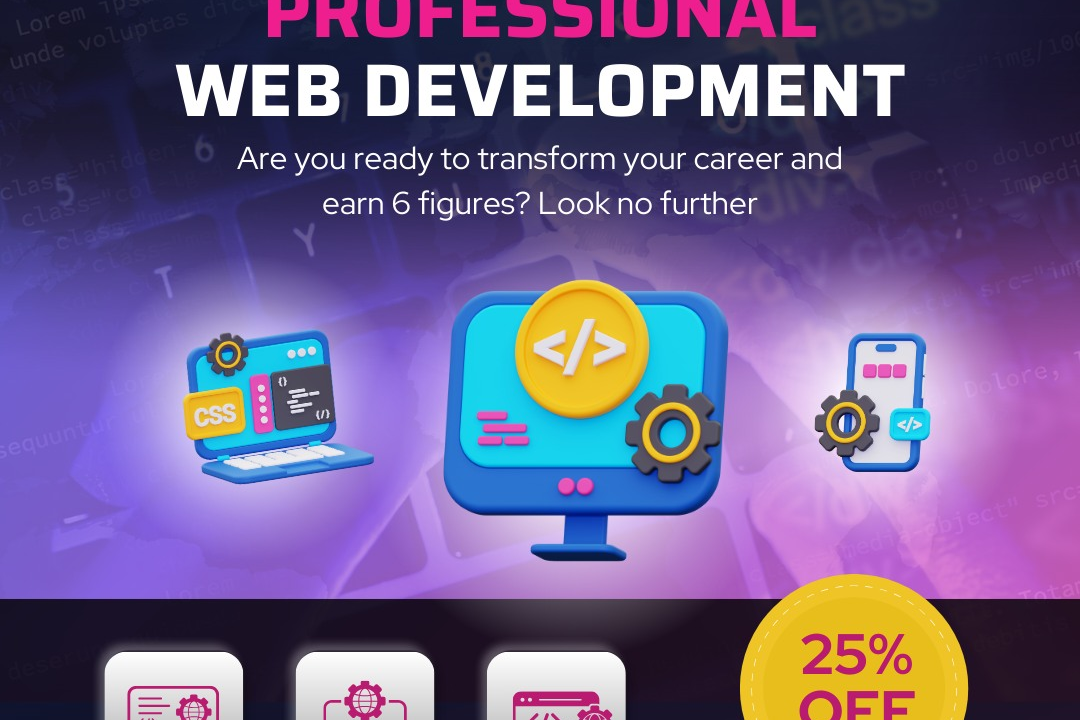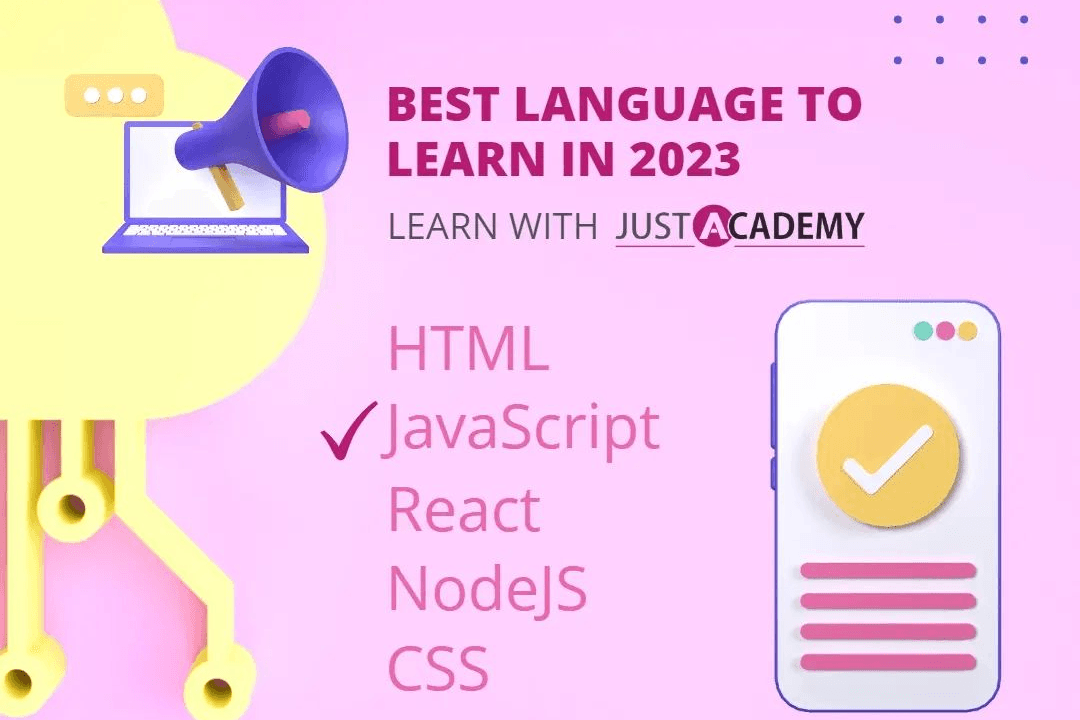laravel interview questions and answers for 3 year experience PDF
Comprehensive Laravel Interview Questions and Answers for Experienced Developers
laravel interview questions and answers for 3 year experience PDF
Preparing for a Laravel interview, especially with three years of experience, involves familiarizing yourself with common questions and answers that highlight your expertise in this PHP framework. A PDF compilation of Laravel interview questions and answers is an invaluable resource for candidates, as it provides a structured approach to understanding key concepts, advanced features, and best practices associated with Laravel. By reviewing these materials, candidates can reinforce their knowledge, boost their confidence, and improve their chances of effectively demonstrating their skills during an interview. Additionally, this resource can help identify areas for further study, ensuring a well-rounded preparation that aligns with industry expectations.
To Download Our Brochure: https://www.justacademy.co/download-brochure-for-free
Message us for more information: +91 9987184296
Here’s a compilation of Laravel interview questions and answers for candidates with three years of experience:
1 - What is Laravel?
Laravel is a powerful PHP framework designed for building web applications following the MVC (Model View Controller) architectural pattern. It simplifies common tasks such as routing, sessions, caching, and authentication, making web development more efficient.
2) Can you explain the concept of Middleware in Laravel?
Middleware in Laravel acts as a bridge between a request and response, providing a convenient way to filter HTTP requests entering your application. It can be used for tasks such as authentication, logging, and CORS, allowing developers to add custom logic at the application layer.
3) How does Laravel handle Routing?
Laravel uses a simple and elegant routing system that allows developers to define routes in the `web.php` file. Routes can be defined using HTTP verbs like GET, POST, PUT, and DELETE, and can be linked to controller actions or closure functions.
4) What is Eloquent ORM?
Eloquent is Laravel’s built in Object Relational Mapping (ORM) system that provides an active record implementation for working with the database. It allows developers to interact with the database using PHP syntax instead of raw SQL, offering a more intuitive and expressive way to manage database records.
5) Describe Laravel’s Service Container.
The Service Container is a powerful dependency injection container used for managing class dependencies and performing dependency injection. It allows developers to bind interfaces to implementations, facilitating a loosely coupled architecture and making it easier to manage class dependencies.
6) What are Laravel Blade Templates?
Blade is Laravel’s templating engine that allows developers to create dynamic and reusable views with a clean syntax. It provides features like template inheritance, sections, and loops, making it easier to build complex layouts while keeping the code organized.
7) How do you implement validation in Laravel?
Validation in Laravel can be implemented using the `Validator` facade or by using form request classes. You define validation rules in a controller or a dedicated request class, allowing Laravel to automatically validate incoming requests and return error messages when validation fails.
8) Explain the concept of Laravel Migrations.
Migrations in Laravel are a version control system for the database schema, allowing developers to modify the database structure in a structured way. Migrations can be created to add, modify, or delete tables and columns, and can be rolled back easily, ensuring that database changes are manageable and reproducible.
9) What is the purpose of Laravel’s CSRF protection?
Cross Site Request Forgery (CSRF) protection in Laravel helps prevent unauthorized commands from being transmitted from a user that the web application trusts. Laravel automatically generates a CSRF token for each active user session, which must be included in forms to validate that requests are coming from authenticated users.
10) How would you implement authentication in Laravel?
Authentication in Laravel can be easily implemented using the built in authentication system. By running the artisan command `php artisan make:auth`, developers can scaffold authentication views and routes. Laravel uses session based authentication with password hashing for enhanced security.
11 - What is the purpose of Laravel’s Artisan Console?
Artisan is Laravel's command line interface that provides various helpful commands for application development and maintenance. It allows developers to automate repetitive tasks such as database migrations, seeding, tests, and generating boilerplate code, enhancing productivity.
12) Can you explain Laravel’s Events and Listeners?
Events in Laravel provide a simple observer pattern implementation, allowing developers to subscribe and listen for events in their application. This decouples the components of the application, letting them act independently. When an event occurs, associated listeners respond, enabling organized and maintainable code structures.
13) How can you schedule tasks in Laravel?
Task scheduling in Laravel is handled through the `schedule` method in the `App\Console\Kernel` class. Developers can define scheduled tasks using a fluent syntax, allowing PHP scripts or shell commands to be run at specified intervals without needing to create cron entries manually.
14) What are Laravel Facades?
Facades in Laravel provide a static style interface to classes that are available in the service container. They act as a shortcut to access underlying classes, making the code more concise while allowing easy access to service functionality, such as caching, routing, and session handling.
15) Explain the difference between `hasOne` and `belongsTo` relationships in Eloquent.
In Eloquent, `hasOne` indicates that one model owns another model, while `belongsTo` indicates that a model is owned by another model. For example, in a user and profile scenario, a User model may `hasOne` Profile, while the Profile model `belongsTo` User, reflecting the direction in which the relationship is defined.
This selection of questions and answers can serve as an effective preparation tool for your upcoming Laravel interviews.
Here are additional Laravel interview questions with detailed answers, suitable for candidates with three years of experience:
16) What are the different types of relationships available in Eloquent?
Eloquent supports several types of relationships, including:
One to One: A single record from one model relates to a single record from another model (e.g., User and Profile).
One to Many: A single record from one model relates to multiple records from another model (e.g., Post and Comments).
Many to One: Multiple records from one model relate to a single record from another model (e.g., Comments belonging to a Post).
Many to Many: Records from one model can relate to multiple records from another model, and vice versa (e.g., Users and Roles).
Polymorphic Relationships: Allows a model to belong to more than one other model on a single association (e.g., a Comment model that can belong to both Post and Video models).
17) What are Laravel Seeders?
Seeders are classes in Laravel that allow developers to populate their database with dummy data. By creating seed classes using Artisan commands, developers can define how data is inserted into the database, which is useful for testing and development purposes.
18) How can you handle file uploads in Laravel?
File uploads in Laravel can be managed using the `Storage` facade. Developers can define file upload forms and use validation to ensure the correct file types are uploaded. Files can be stored in various disks configured in `config/filesystems.php`, including local or cloud storage such as Amazon S3.
19) What is the purpose of the `config` directory in a Laravel application?
The `config` directory contains various configuration files for the application, which define settings and options for different components, such as database connections, mail settings, caching, and validation rules. Laravel loads these configuration files automatically, making it easy to maintain and alter application settings.
20) Explain the concept of Dependency Injection in Laravel.
Dependency Injection is a design pattern that allows a class to receive its dependencies from an external source rather than creating them directly. In Laravel, the service container manages dependency injection, allowing for better testing, easier maintenance, and a more modular application architecture.
21 - What is the use of `.env` file in Laravel?
The `.env` file is used for environment variables in a Laravel project. It contains application configuration settings such as database credentials, application key, environment type (production, local, etc.), and other sensitive data. Laravel uses the values defined in the `.env` file to configure the application at runtime, allowing for easy changes without modifying the codebase.
22) How can you implement localization in Laravel?
Localization in Laravel can be implemented by creating language files in the `resources/lang` directory. Developers can define translation strings for different languages, and use the `__()` helper function or the `@lang` Blade directive to output the corresponding translation based on the application's locale.
23) What are job queues, and how does Laravel handle them?
Job queues in Laravel allow developers to defer the processing of a time consuming task, such as emailing or data processing, to a background job. This can improve application performance. Laravel provides an expressive API to create jobs and supports various queue drivers, such as database, Redis, and Amazon SQS.
24) Describe how you would implement a Form Request Validation.
Form Request Validation in Laravel can be implemented by creating a custom request class using the Artisan command `php artisan make:request RequestName`. Inside the generated request class, developers define validation rules using the `rules` method, which Laravel will automatically invoke when the request is processed, ensuring that incoming data is validated before reaching the controller.
25) What is the role of the `public` directory in a Laravel application?
The `public` directory serves as the document root for the web server. It contains the `index.php` file, which is the entry point for all HTTP requests, routing them to the application's core. Static assets like CSS, JavaScript, and images are also stored in this directory, allowing them to be publicly accessible.
26) How does Laravel handle caching?
Laravel provides a unified API for various caching backends, allowing developers to cache data for improved performance. Caching can be done at multiple levels, such as route caching, query caching, or application data caching, and supports various drivers like Redis, Memcached, and file caching.
27) What is the purpose of Laravel's `routes/api.php` file?
The `routes/api.php` file is used to define routes for API endpoints in Laravel applications. Routes defined in this file are stateless, meaning they do not maintain session state. Laravel automatically applies the `api` middleware group to these routes, providing features like rate limiting and API authentication.
28) Explain the use of `Route Model Binding`.
Route Model Binding is a feature in Laravel that automatically injects model instances into routes based on route parameters. It simplifies controllers by allowing developers to define route parameters that correspond directly to their model instances, eliminating the need for manual retrieval using IDs.
29) How can you create custom middleware in Laravel?
Custom middleware in Laravel can be created using the Artisan command `php artisan make:middleware MiddlewareName`. Once created, the middleware logic can be defined in the `handle` method within the new middleware class, and it can be applied to routes in the `Kernel.php` file or directly on route definitions.
30) What are the security features provided by Laravel?
Laravel provides several built in security features, including:
CSRF Protection: Prevents CSRF attacks by generating and validating CSRF tokens.
Password Hashing: Uses bcrypt by default for hashing passwords.
SQL Injection Prevention: Uses prepared statements to protect against SQL injection.
Input Validation: Automatically handles user input validation to prevent malicious data.
Authorization Policies and Gates: Helps control access to resources using policies and gates.
These additional questions and answers can further enhance your understanding and preparation for Laravel interviews, showcasing your expertise and experience in the framework.
Course Overview
The “Laravel Interview Questions and Answers for 3 Year Experience PDF” course is designed to equip developers with comprehensive knowledge and practical insights needed to excel in Laravel-related job interviews. This course covers a wide range of topics, including advanced Eloquent methods, middleware creation, caching strategies, and security features specific to Laravel applications. Through a curated selection of commonly asked interview questions and detailed answers, participants will develop a deep understanding of both fundamental concepts and nuanced techniques crucial for demonstrating expertise in Laravel. Whether you're preparing for a technical interview or looking to enhance your skillset, this course provides valuable resources and expert guidance that streamlines your learning experience, making it an essential tool for career advancement in the field of web development.
Course Description
The “Laravel Interview Questions and Answers for 3 Year Experience PDF” course is meticulously crafted for developers seeking to deepen their understanding of Laravel and enhance their interview readiness. This course presents a comprehensive collection of interview questions frequently encountered by candidates with three years of experience, along with detailed answers and explanations that not only clarify the concepts but also showcase best practices in Laravel development. Covering essential topics such as routing, middleware, Eloquent ORM, and application security, the course equips participants with the knowledge and confidence needed to tackle common interview challenges, making it an invaluable resource for those aiming to advance their careers in web development using Laravel.
Key Features
1 - Comprehensive Tool Coverage: Provides hands-on training with a range of industry-standard testing tools, including Selenium, JIRA, LoadRunner, and TestRail.
2) Practical Exercises: Features real-world exercises and case studies to apply tools in various testing scenarios.
3) Interactive Learning: Includes interactive sessions with industry experts for personalized feedback and guidance.
4) Detailed Tutorials: Offers extensive tutorials and documentation on tool functionalities and best practices.
5) Advanced Techniques: Covers both fundamental and advanced techniques for using testing tools effectively.
6) Data Visualization: Integrates tools for visualizing test metrics and results, enhancing data interpretation and decision-making.
7) Tool Integration: Teaches how to integrate testing tools into the software development lifecycle for streamlined workflows.
8) Project-Based Learning: Focuses on project-based learning to build practical skills and create a portfolio of completed tasks.
9) Career Support: Provides resources and support for applying learned skills to real-world job scenarios, including resume building and interview preparation.
10) Up-to-Date Content: Ensures that course materials reflect the latest industry standards and tool updates.
Benefits of taking our course
Functional Tools
1 - Laravel Framework
The primary tool used in this course is the Laravel framework itself. Laravel is an open source PHP framework that simplifies web development processes through its elegant syntax and powerful features. Students will learn to utilize the framework for building secure and scalable web applications efficiently. The course covers various aspects of Laravel, including its MVC architecture, routing, middleware, and ORM features, which are essential for real world application development. Mastering Laravel enhances a developer's ability to create robust applications and prepares them for practical interview scenarios.
2) Composer
Composer is a dependency management tool that is integral to PHP and Laravel development. Throughout the course, students will learn how to use Composer to manage project dependencies and libraries. Understanding Composer is crucial as it simplifies the process of integrating third party packages and libraries into Laravel projects. This hands on experience equips learners with the skills necessary to handle various dependencies efficiently, ensuring their projects remain organized and maintainable.
3) PHPUnit
PHPUnit is a widely used testing framework in the PHP ecosystem, vital for ensuring code quality through automated testing. Students in this course will gain experience with PHPUnit, learning to write unit tests for their Laravel applications. This knowledge not only reinforces good coding practices but also prepares students for interview questions related to testing methodologies. By understanding how to implement tests, learners can demonstrate their commitment to producing reliable and bug free code to potential employers.
4) MySQL/MariaDB
Database management systems like MySQL or MariaDB are essential components of full stack web development in Laravel applications. The course includes hands on training with database migration, seeding, and querying using Eloquent ORM. Students will learn to design and interact with databases effectively, which is critical for building dynamic web applications that require data storage and retrieval. Knowledge of relational databases will be a key topic in interview preparations, aligning with what hiring managers seek in experienced Laravel developers.
5) Git
Version control systems like Git are essential for modern software development, facilitating collaboration and code management. The training program emphasizes the importance of Git in maintaining project histories and collaborating with team members. Students will learn fundamental Git commands, branching strategies, and how to manage repositories on platforms like GitHub. This experience is crucial not only for personal development but also for demonstrating collaborative skills during interviews, as employers look for candidates who can work effectively in team environments.
6) Postman
Postman is an invaluable tool for API testing and development. In this course, students will become adept at using Postman to test their Laravel applications’ API endpoints. They will learn to construct requests, analyze responses, and validate the functionality of their APIs. Gaining proficiency in Postman prepares students for practical challenges they may encounter in their jobs and during interviews, as modern web applications increasingly rely on API driven architectures.
The Laravel interview questions and answers training program is designed to equip students with in depth knowledge and practical skills through these tools, creating a comprehensive learning experience that effectively addresses the needs of candidates with three years of experience. By empowering learners with advanced knowledge and hands on experience using these essential tools, JustAcademy ensures that they are not only prepared for interviews but also for their future roles as proficient Laravel developers. The training structure focuses on both theoretical understanding and practical application, fostering confidence in their abilities and enhancing job readiness.
Here are additional points to enhance the training program and provide a more comprehensive learning experience for students:
7) RESTful API Development
Understanding how to build and consume RESTful APIs is crucial for web developers. In this course, students will learn how to create RESTful APIs using Laravel, covering topics such as routing, response formatting, and API versioning. They will also explore best practices for API design and learn how to document their APIs effectively. This knowledge is vital for job readiness, as many modern applications depend on API integrations.
8) Frontend Integration
While Laravel is a backend framework, it is important for developers to understand how their applications interface with the frontend. This course includes fundamental concepts of frontend technologies such as HTML, CSS, and JavaScript, alongside Vue.js integration with Laravel. This integration enables students to create dynamic applications and prepares them for roles that require collaboration with frontend developers.
9) Authentication and Authorization
Security is a major concern in web development. The training covers Laravel’s built in authentication and authorization systems, including user registration, login, role based access control, and password reset functionalities. Mastering these concepts is essential for developers as they will need to implement secure systems that protect user data. This knowledge will also be useful in interviews, where security practices may be discussed.
10) Deployment and Server Management
Deploying a Laravel application to a live server is an essential skill for developers. The course will teach students about different hosting environments, continuous integration and deployment (CI/CD) methodologies, and server management best practices. Understanding how to deploy applications securely and efficiently will enhance their technical proficiency and is a key component of any developer role.
11 - Laravel Mix
Laravel Mix is a tool that simplifies asset compilation and management. Students will learn how to use Laravel Mix to handle tasks like compiling Sass, JavaScript, and images efficiently. Proficient use of Mix will give students an edge in ensuring that their applications are built with optimized assets, which improves performance and user experience.
12) Middleware and Security Practices
Middleware offers developers a way to filter HTTP requests entering their application. The course will dive into creating custom middleware, as well as understanding how to implement security measures such as CSRF protection, request validation, and data sanitization. These skills are crucial for building secure applications, and reinforce the importance of security in software development.
13) Caching Strategies
Efficiency is key in application performance. Students will learn about Laravel’s caching system and how to implement caching strategies to enhance application speed and performance. Understanding caching mechanisms can significantly reduce database load and improve user experience, an attractive feature for employers looking for performance minded candidates.
14) Task Scheduling with Artisan
Laravel’s Artisan command line tool is a powerful feature for developers. The course includes lessons on how to schedule recurring tasks and optimize command execution using Artisan. Familiarity with task automation is important for backend developers to streamline processes and enhance productivity in their workflow.
15) Responsive Design Principles
With the growing use of mobile devices, understanding responsive design is crucial. The course will introduce students to responsive web design principles and best practices for ensuring their applications work seamlessly on different screen sizes. This knowledge is vital for creating user friendly web applications that cater to all users, regardless of device.
16) Database Optimization
Optimizing database queries is critical for application performance. The course will cover techniques for database optimization, including indexing, query optimization, and analyzing query performance. This expertise is essential for developers who want to build scalable applications and is often a topic of discussion in technical interviews.
17) Project Management Tools
Students will be introduced to agile methodologies and project management tools like Jira or Trello. Learning how to manage tasks efficiently and communicate progress is essential for developers working within teams and aligns with the collaboration skills employers seek.
By expanding the curriculum to include these points, JustAcademy ensures that students not only gain expertise in Laravel development but also acquire a well rounded skill set that enhances their employability and readiness for real world challenges in the tech industry.
Browse our course links : https://www.justacademy.co/all-courses
To Join our FREE DEMO Session:
This information is sourced from JustAcademy
Contact Info:
Roshan Chaturvedi
Message us on Whatsapp: +91 9987184296
Email id: info@justacademy.co
50 iOS interview questions & answers
Ios Swift Top 20 Interview Questions












